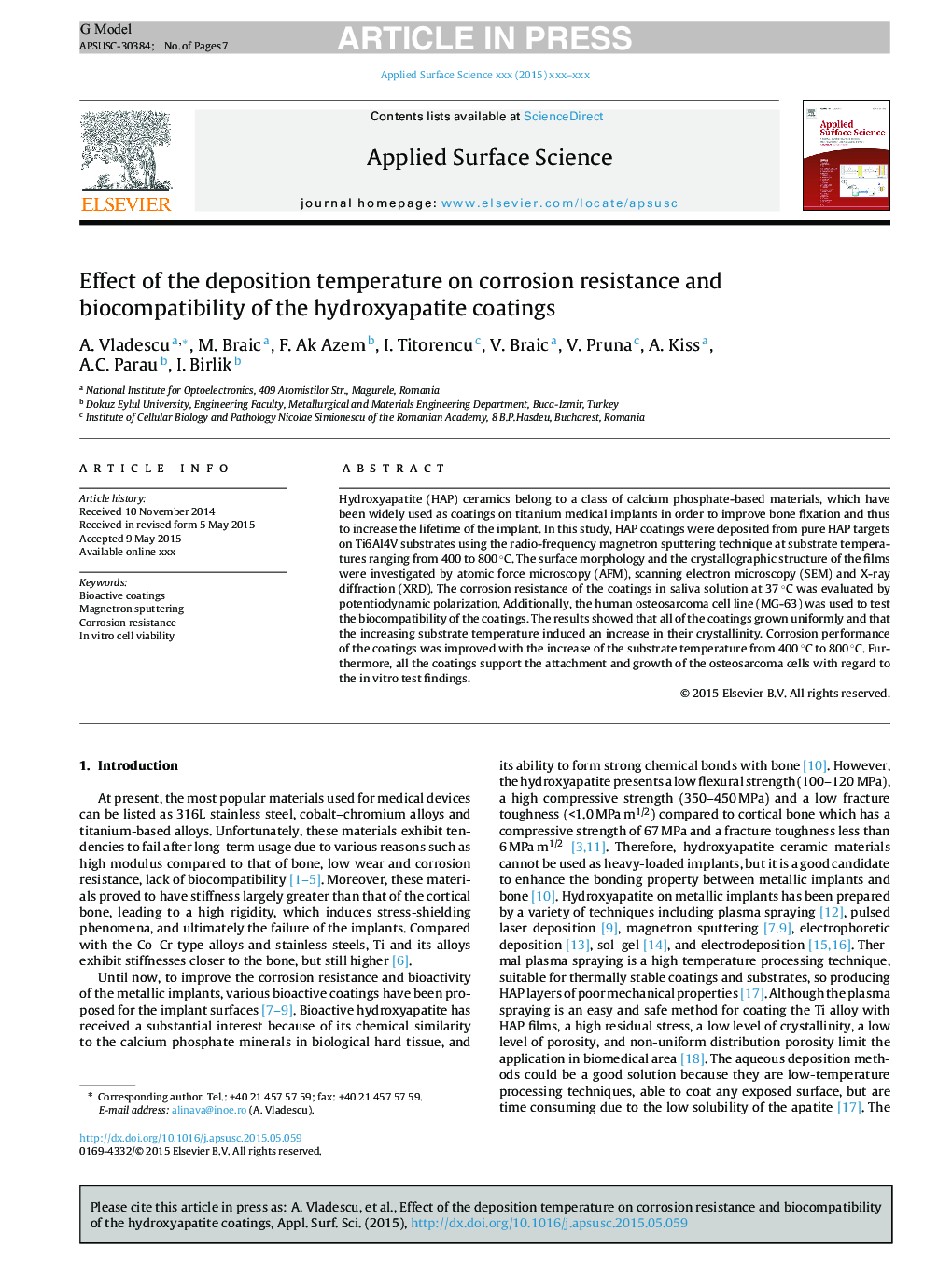| Article ID | Journal | Published Year | Pages | File Type |
|---|---|---|---|---|
| 5349116 | Applied Surface Science | 2015 | 7 Pages |
Abstract
Hydroxyapatite (HAP) ceramics belong to a class of calcium phosphate-based materials, which have been widely used as coatings on titanium medical implants in order to improve bone fixation and thus to increase the lifetime of the implant. In this study, HAP coatings were deposited from pure HAP targets on Ti6Al4V substrates using the radio-frequency magnetron sputtering technique at substrate temperatures ranging from 400 to 800 °C. The surface morphology and the crystallographic structure of the films were investigated by atomic force microscopy (AFM), scanning electron microscopy (SEM) and X-ray diffraction (XRD). The corrosion resistance of the coatings in saliva solution at 37 °C was evaluated by potentiodynamic polarization. Additionally, the human osteosarcoma cell line (MG-63) was used to test the biocompatibility of the coatings. The results showed that all of the coatings grown uniformly and that the increasing substrate temperature induced an increase in their crystallinity. Corrosion performance of the coatings was improved with the increase of the substrate temperature from 400 °C to 800 °C. Furthermore, all the coatings support the attachment and growth of the osteosarcoma cells with regard to the in vitro test findings.
Related Topics
Physical Sciences and Engineering
Chemistry
Physical and Theoretical Chemistry
Authors
A. Vladescu, M. Braic, F. Ak Azem, I. Titorencu, V. Braic, V. Pruna, A. Kiss, A.C. Parau, I. Birlik,
